Andon Ryokan: The Lantern and a Quiet Slip Through Time

Andon Ryokan is a charming Japanese inn located near Tokyo's Asakusa area. Staying at Andon Ryokan is a chance to taste Japanese home cooking and to enjoy the relaxing atmosphere of a lodging tastefully decorated with precious antiques.
Welcome to Tokyo Ryokan Story, by Roza Akino
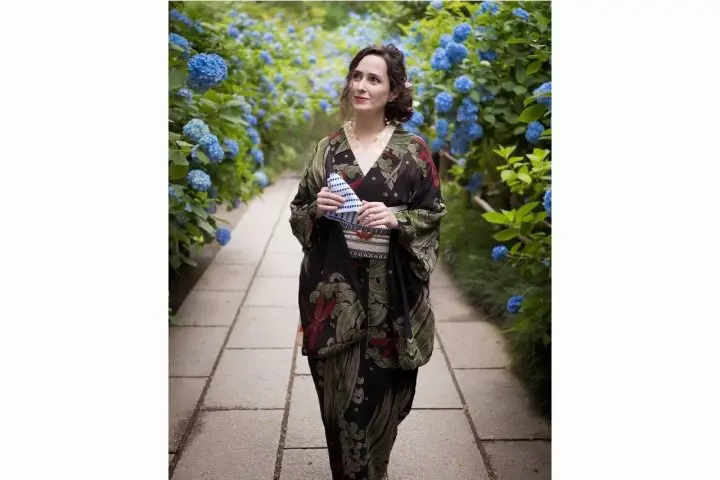
First, let me introduce myself. My name is Roza Akino and I live and work in Japan as an actress and model. I am also a lover of traditional culture, and an avid ryokan – traditional Japanese inn – enthusiast.
This is the first installment of Tokyo Ryokan Story, a series of posts featuring some of the lesser-known ryokan and hotels located throughout Tokyo. I hope you will join me on this journey!
Andon Ryokan, an Artistic Inn Near Asakusa

Andon Ryokan’s sign, in the shape of a traditional Edo period lantern, in front of the entrance
Nestled in a quiet area of Tokyo's Taito ward, a 5-minute walk from Minowa Station on the Hibiya Line, is Andon Ryokan, also known as “the Lantern Ryokan.” Built in 2003, its shape was inspired by an antique lantern from the Edo period (1603-1868) and has been a point of interest for architects from around the world.

The recently renovated area, complete with a tea hearth and faucet for serving traditional tea (reservations for the tea experience are available on certain days)
As I step into the building, I dive into the calm atmosphere of this inn, and it feels as if I’m slipping into a different dimension. With its dim lighting and muted colors, Andon Ryokan is not a typical ryokan.

A Showa-period (1926-1989) cabinet containing various dishware with antiques displayed on top
The proprietress, Toshiko Ishii, has a love for antiques. This is apparent as you walk through the building, in her choice of furniture as well as the various figures and statues on display, which are changed according to the season.
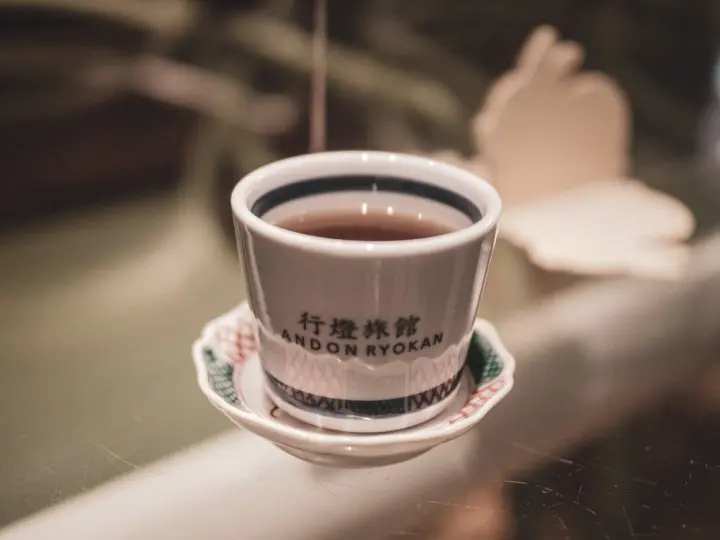
The bunny-shaped holder for the acrylic panel
As I wait to interview her, she offers me some water. I can already tell that Ishii-san has carefully selected every detail of this place, from the kiriko-style faceted glass of water to the bunny-shaped acrylic panel holder that sits on the table as part of preventative measures taken to prevent the spread of COVID-19 infections.
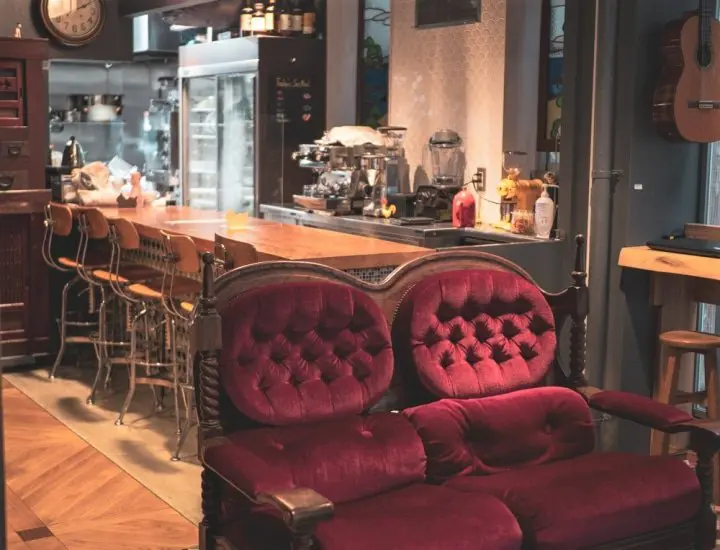
The lobby and bar/counter are decorated in a nostalgic retro style
Opening a new ryokan in Tokyo in this day and age is not very common, but Ishii-san’s motivation behind doing so was to allow guests to experience food eaten in a regular Japanese home.
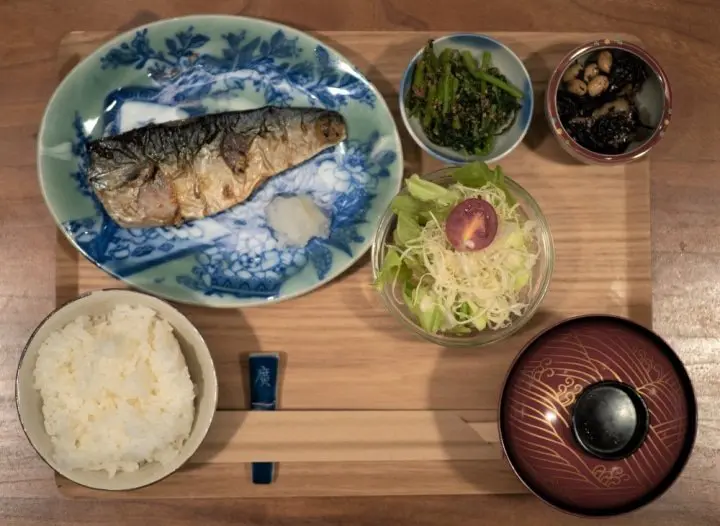
An example of a fish breakfast meal (mackerel)
The meals served here are an essential part of the experience. The menu changes daily depending on what seasonal ingredients are available, and guests get the option of choosing a fish, meat, or vegetarian dish for dinner (vegan preferences can also be accommodated).

An example of a meat dinner meal (pork cutlet)
The meals are prepared to be well-balanced; the rice is organic, and you can even pick from three options of miso paste for your miso soup as well. As a bonus, all of the breakfast, lunch, and dinner options are very reasonable, ranging from 1,100 to 1,540 yen in price.

Ishii-san makes her own ume-shu (plum wine), which is available for guests to try as well.
After devouring my katsu-teishoku (pork cutlet set meal), I ask Ishii-san to show me around the guest rooms. The ryokan has a total of 20 rooms situated on the second to the fourth floors, 19 of which accommodate up to two people, and one that accommodates three to four people.

The baggage lift
The five-story ryokan doesn’t have an elevator, but it does have a baggage lift that will help you easily get your luggage to whichever floor the room is on.

The door to the restroom...fancy!
As we move through the ryokan, Ishii-san shows me the inside of the shared restrooms that are situated on each floor. The wall tiles in each of the restrooms, which Ishii-san meticulously assembled herself, have traditional Japanese folktale themes such as Kaguyahime (*1) and Momotaro (*2).
*1 Kaguyahime monogatari, also known as "The Tale of the Bamboo Cutter," is a story written around mid-Heian period (794-1185).
*2 Momotaro: A legendary hero who appears in one of the best-known Japanese folktales.

Wall tiles showing a scene from the story “Kaguyahime”

Ishii-san holding an English booklet explaining the story of Kintaro
A couple of the restrooms feature manga paintings, hand-painted on the wall, and there’s even one with a few manga panels for you to read while you’re...going about your business.

Going through the floors, I can see a variety of antiques displayed in every corner. From statues and figures to stained-glass lamps, and even a mid-nineteenth century child’s kimono framed on the wall!
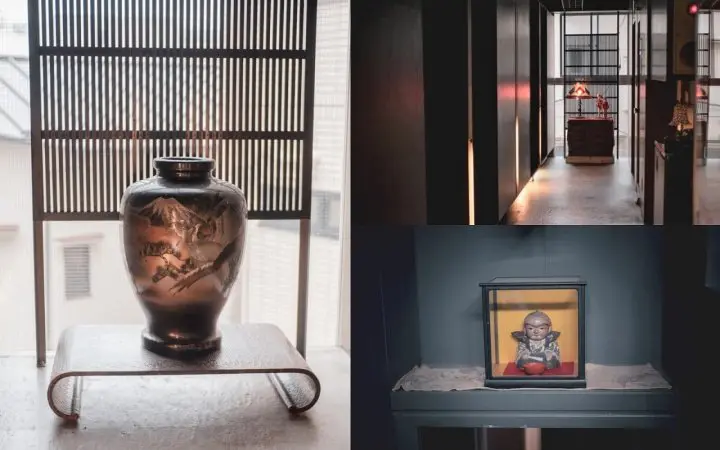
Various antiques on display throughout the ryokan
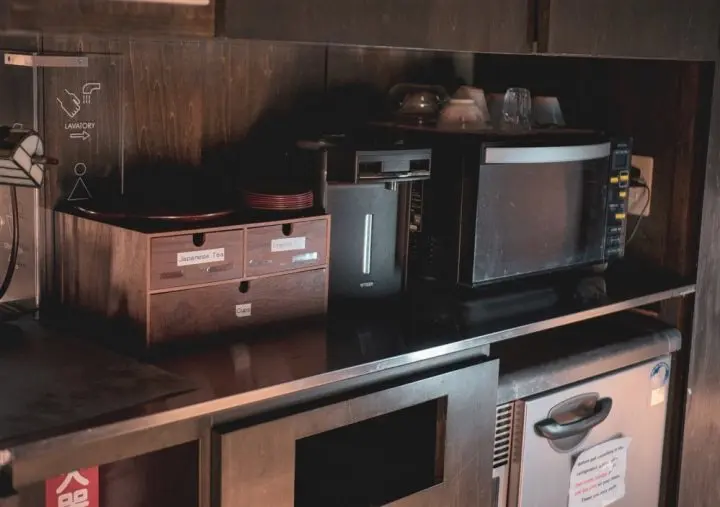
Amenities on each floor

The guest rooms are small but quaint. The lighting in the hallways as well as the rooms is very soft and contributes to the overall muted mood of the building. Each room is also soundproof, and even with its minimalistic design, still features a small table, lamp, and even a TV.
The futon bedding is folded up neatly. There is a set of yukata (light kimonos) in each room to give you the full Japanese bathing experience.

Speaking of baths, Andon Ryokan has an excellent private bath, a jacuzzi to be precise, that can be reserved for your personal use. It took all my willpower not to jump right in, but alas, my schedule for the day did not permit it.
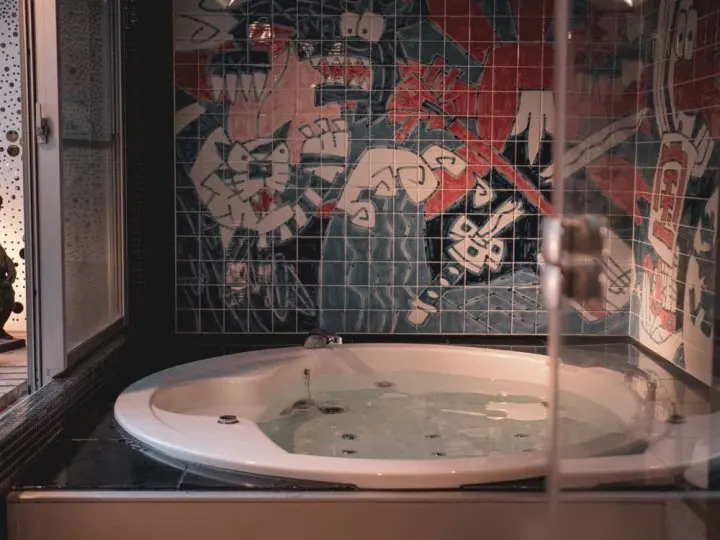
The tiles around the bathtub have also been artistically decorated, and the window opens to a view of the sky and some antique statues that Ishii-san has collected.
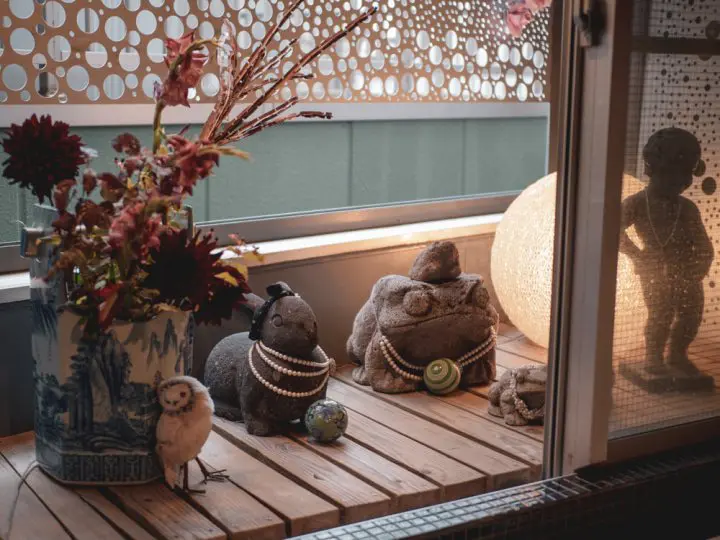
Our last stop, which was not very long due to the rainy weather, was to the roof. When sunny, however, the rooftop has an area with a bench where guests can chat, enjoy some beer, or even have a smoke.

The tread up the steep flight of stairs would certainly be worth it to relax and enjoy the view of the city when skies are blue.
Andon Ryokan offers a unique homey experience to its overnight guests, but what’s also nice is that even those just passing by can enjoy Andon’s food for breakfast, lunch, or dinner, or even reserve the private bath for half an hour for a small fee of 1,000 yen.

If you decide to take the 20-minute walk to the popular sightseeing area of Asakusa, you can also walk through the old historic pleasure quarters of Yoshiwara. Of course, if walking is not your cup of tea, there’s also a bus stop right in front of the ryokan that will take you there as well.
The part of Tokyo is also one of the few remaining areas where many sento public baths still exist. Including a visit to one or more sento to your stay in this area can be an adventure in itself, but be sure to familiarize yourself with Japanese bath manners, if you haven’t already, before you go.
Hotels near Andon Ryokan
I am an actress and model living in Japan. Tokyo Ryokan Stories is my essay series about less-known but amazing ryokan and hotels in Tokyo.



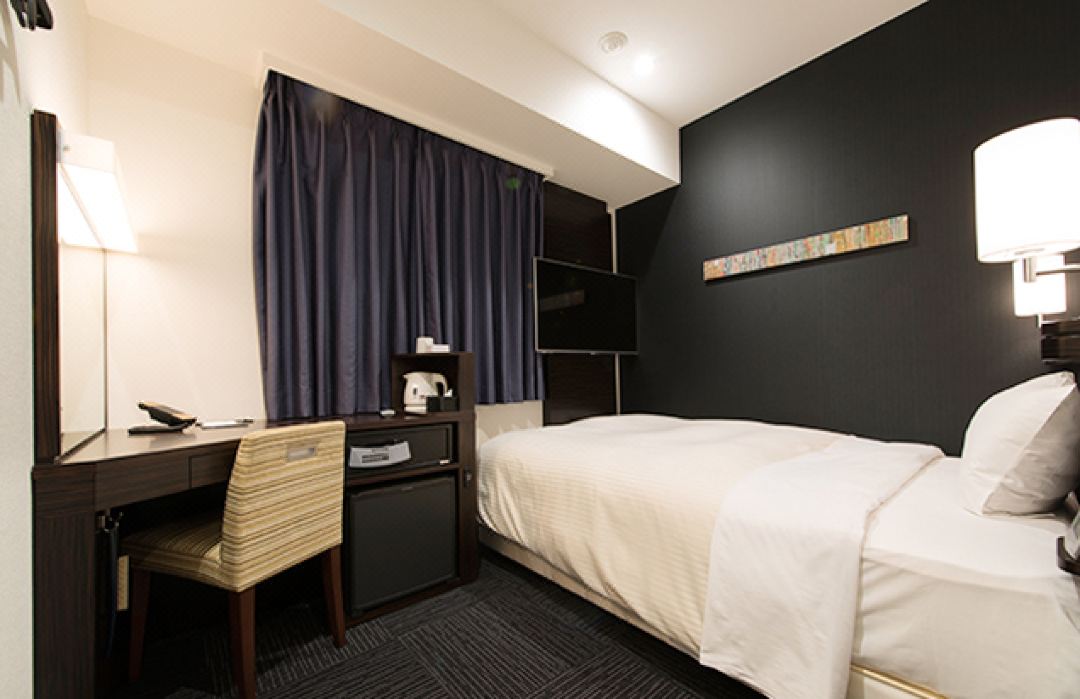

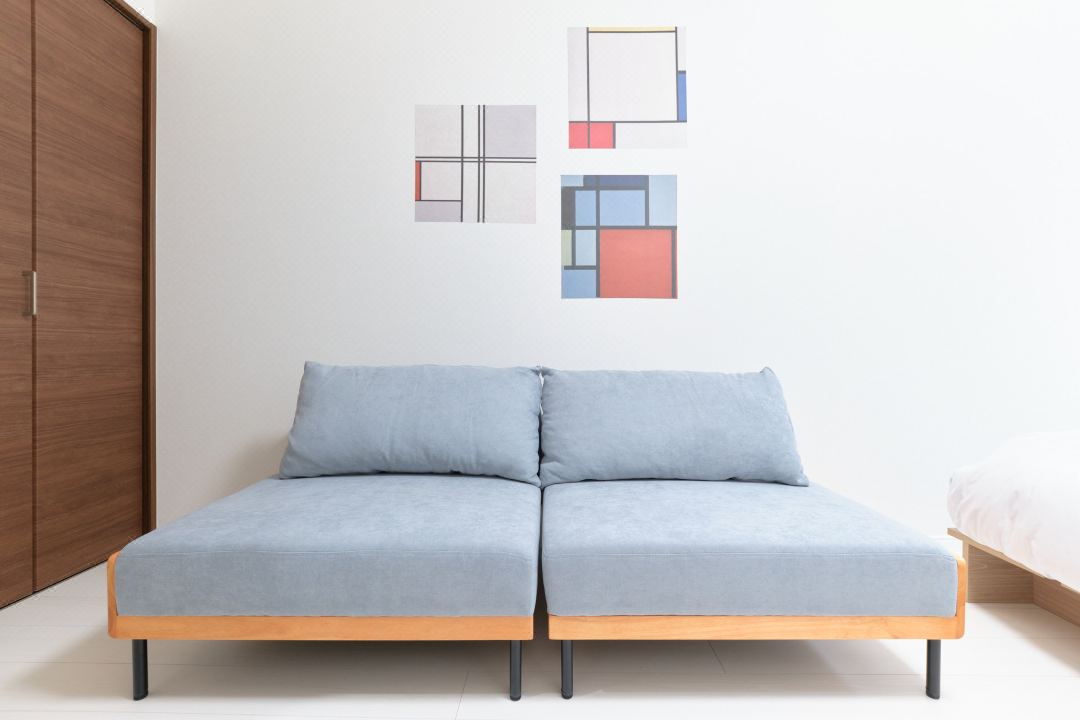
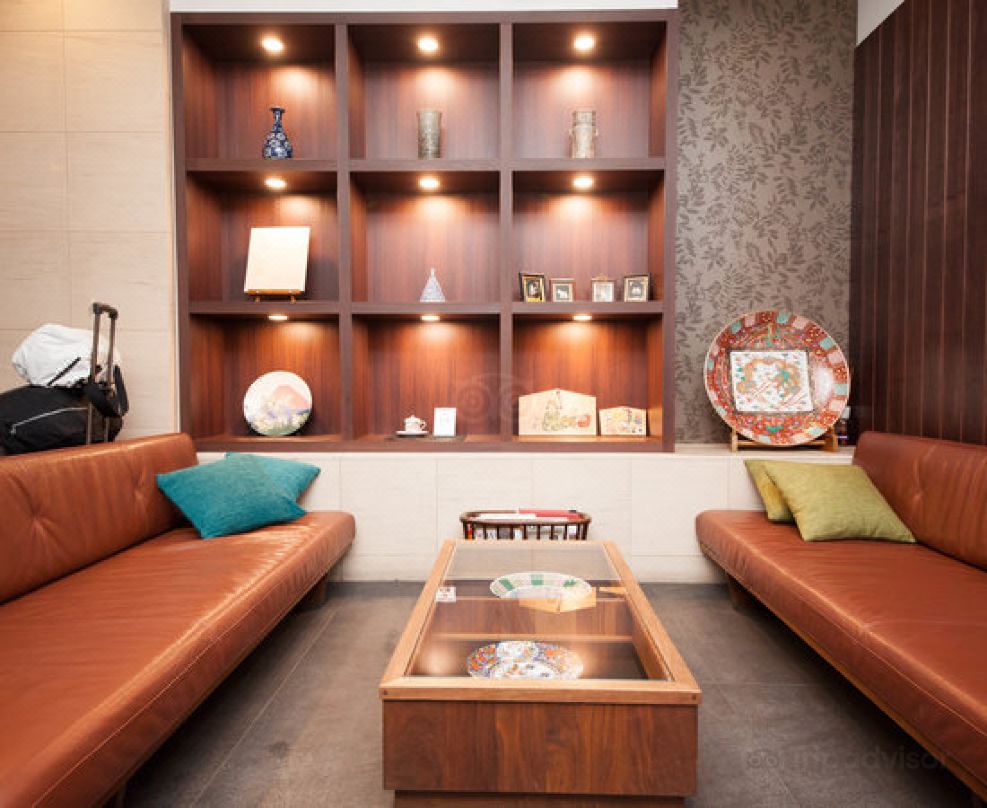































![[2026] Top 5 Strawberry Picking Spots in Tokushima, Naruto| Farms and Access Guide for January to May](https://resources.matcha-jp.com/resize/720x2000/2025/03/06-227165.webp)
![[Yamanashi/ Hokuto City] 4 Hot New Spots Opening in 2026](https://resources.matcha-jp.com/resize/720x2000/2025/12/12-252747.webp)


